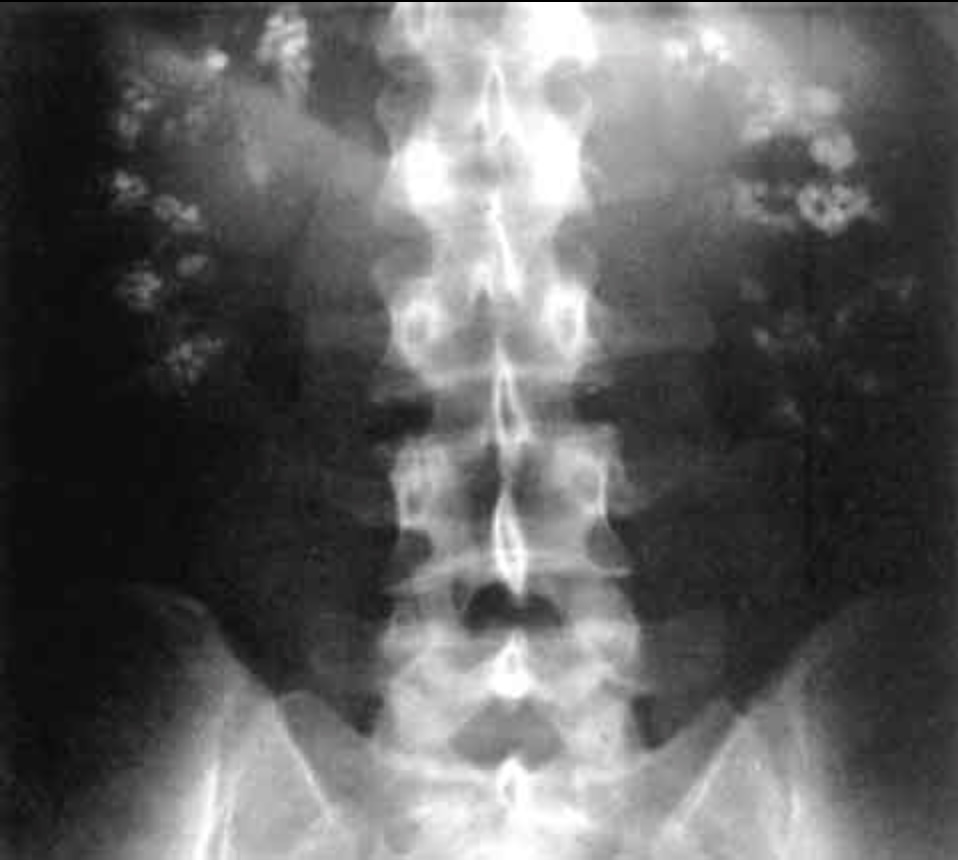Playlist
Show Playlist
Hide Playlist
Renal Tubular Acidosis (RTA) in Children: Type 1
-
Slides RTA Pediatrics.pdf
-
Download Lecture Overview
00:02 In this lecture, we’re going to review renal tubular acidosis. 00:06 This is a difficult topic to address because it’s complicated. 00:10 But I’m going to try and make it as basic as we can, so we can understand the fundamental aspects of this disease. 00:18 So it’s clear that we worry about renal tubular acidosis in children when they have non-gap acidosis but do not have another cause such as diarrhea. 00:30 There are 4 types of renal tubular acidosis, types 1, 2, 3 and 4. 00:37 In general, you can think of these as starting as most distal in the loop on Henle and then going more proximal. 00:44 So type 1 is the farthest from the glomerulus and type 4 is the closest. 00:50 I’m going to through these types of RTA one at a time. 00:54 So let’s start with type 1 RTA. 00:58 Here is a renal tubule collecting duct cell. 01:03 Remember, this is in the distal part in the collecting duct of the kidney. 01:09 On the left side of the slide is where the blood is and on the right side of the slide is where the urine is, and the cell is the green box in the middle that has the alpha. 01:19 In fact, this is the alpha cell of the collecting duct. 01:23 Let’s look at what this cell is doing. 01:26 So in this alpha cell, basically what’s happening is nitrogen is travelling through the cell and into the urine in the form of NH3. 01:35 But that’s not all that’s happening, also that NH3 is then binding with a proton in the urine and that’s combining to form the ammonia ion, which is then being peed out. 01:50 To get that hydrogen out of the collecting duct, we have an ATP-powered proton pump. 01:57 So that ATP-powered proton pump is responsible for getting the hydrogen out, so that it can then bind with the NH3 which freely travel to the cell. 02:09 Additionally, another way to get the protons out is through a counter current exchange mechanism. 02:15 This protein which exchanges a proton for a potassium which is coming back into the cell. 02:23 Here is the beta cell, this is another cell in the collecting duct. 02:28 In this case, it is exchanging negative ions and in particular, it’s extruding a bicarbonate or HCO3 negative ion for a chloride negative ion. 02:42 Okay. 02:43 So the problem in RTA type 1 is that there is an inhibition of the activity of this ATP pump. 02:51 Essentially, protons are having a hard time getting out. 02:56 This will cause a relative acidosis. 02:59 Also, however, there is an up regulation of this particular thing, the exchange pump between the bicarbonate and the chloride. 03:10 Okay. 03:11 So what exactly is going on here? Well, there is a mutation in a gene in primary RTA type 1 or this can also happen in acquired causes. 03:22 Examples would be patients with cirrhosis or lupus or Sjogrens syndrome or sickle cell or lithium or amphotericin exposure. 03:32 So we can have primary or secondary causes of this fundamental problem in the cortical collecting duct. 03:40 Typically in patients with RTA type 1, they will have a lowish HCO3 level in their blood, around 15-20 would be expected. 03:51 Their urine pH should be high, they should have basic urine because they’re peeing out base retaining acid and becoming acidotic. 04:01 Typically because potassium reabsorption may be impaired, these children may have a low potassium. 04:09 Also, they may have hypercalciuria as calcium may go out for the ride and this can result in renal stones. 04:18 In patients with secondary RTA type 1, you will see signs to their secondary disease. 04:24 So for a patient with lupus for example, you might see the malar rash. 04:29 In general however, the way you know a patient has RTA type 1 is that their urine pH is usually high. 04:39 So the treatment is giving them bicitra. 04:42 We replace the bicarb that they were otherwise losing. 04:45 Remember, bicitra is simply 2 bicarbonates stuck together. 04:50 If these patients do have a loss of potassium, we may supplement that, but that’s not always needed as their potassium loss is usually not too severe.
About the Lecture
The lecture Renal Tubular Acidosis (RTA) in Children: Type 1 by Brian Alverson, MD is from the course Pediatric Nephrology and Urology.
Included Quiz Questions
Where in the kidney is the primary defect of type 1 renal tubular acidosis?
- Cortical collecting duct
- Ascending loop of Henle
- Glomerulus
- Descending loop of Henle
- Renal artery
Which of the following acid-base disorders is most commonly seen in patients with renal tubular acidosis?
- Normal anion gap metabolic acidosis
- High anion gap metabolic acidosis
- Low anion gap metabolic acidosis
- Metabolic alkalosis
- Mixed metabolic acidosis and alkalosis
Which of the following ions are exchanged by the beta-intercalated cells of the collecting ducts?
- Cl- and HCO3-
- H+ and K+
- Cl- and K+
- Na+ and Cl-
- Na+ and HCO3-
Which of the following is NOT a feature of RTA type I?
- Elevated serum HCO3-
- Urine pH >5.5
- Hypokalemia
- Hypercalciuria
- Nephrocalcinosis
Customer reviews
5,0 of 5 stars
| 5 Stars |
|
1 |
| 4 Stars |
|
0 |
| 3 Stars |
|
0 |
| 2 Stars |
|
0 |
| 1 Star |
|
0 |
Excellent lecture. It's a topic that I did not encounter in my lectures. Thank you!





